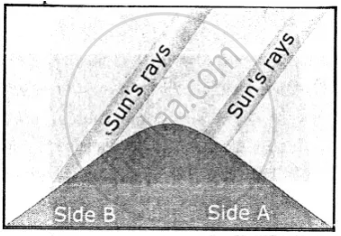Advertisements
Advertisements
प्रश्न
Differentiate between precipitation and condensation. Give one example of each.
उत्तर
Condensation – Dew is a form of condensation. Condensation is the process by which water vapour in the air gets converted into tiny droplets of water or ice. Dew forms in winters when the temperature is very low but not below 0°C. Moist air comes in contact with the cold surfaces near the ground. The water vapour in the air changes to water and we see it as dew drops on grass or on plants. Dewdrops are beneficial for plants.
Precipitation – Precipitation is the falling of atmospheric moisture as a result of condensation. It has many forms such as rainfall, snowfall, and hail.
APPEARS IN
संबंधित प्रश्न
Write true or false. Correct the false statement.
A rise in temperature causes more condensation while a fall in temperature results in evaporation.
Fill in the blanks
The pressure difference causes horizontal movement of air called _____ and vertical movement of air called ____.
How is the cloud cover shown on a weather map? Give examples.
- The diagram alongside illustrates one of the factors that affect temperature. What is it?
- Which side of the mountain is likely to have houses and be covered with trees?

What does a large difference between the temperatures of a dry bulb thermometer and a wet-bulb thermometer of a hygrometer indicate?
Describe the various types of clouds.
What is the weather report?
This could be a classroom activity. If your school laboratory has an anemometer, use it to record your city’s wind speed for a week. Use the Beaufort Scale to find out the character of wind during these days. Record your observations carefully in your notebook. You could even draw small neat sketches to show the effect of the wind.
What are the elements of weather?
What effects do nearness to the sea and height above mean sea level have on the climate?
